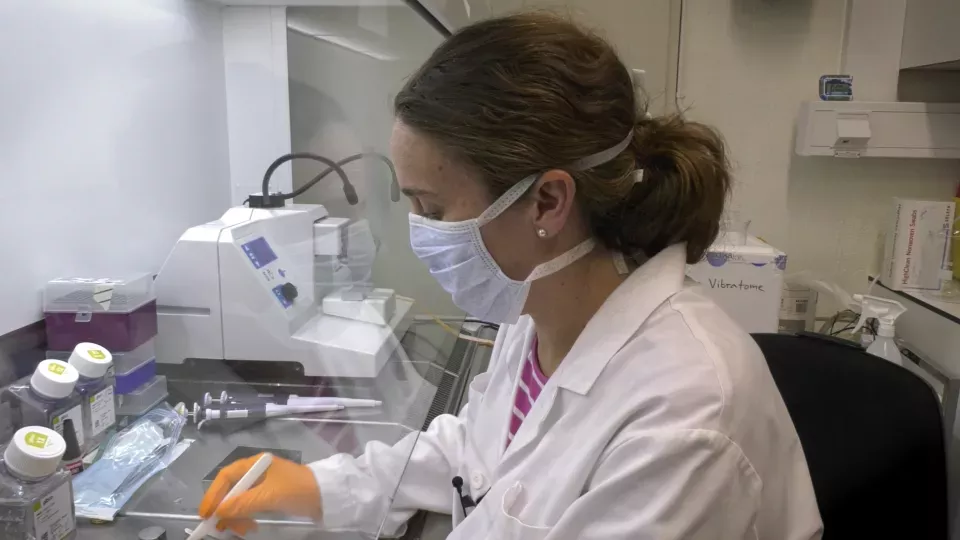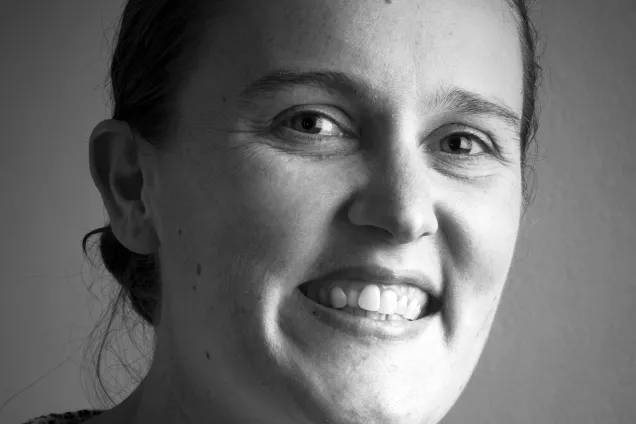Regenerating lungs outside the body
Darcy’s lab is focused on engineering lung tissue outside the body for the purpose of regeneration. The first use of such work is, naturally, generation of donor tissue to help overcome the shortage of donor organs which clinics are currently experiencing. Second, artificial organs function as laboratory models to study disease and effects of medicines much more accurately than simply growing cells in a dish.
Darcy started her education with an undergraduate program in Mechanical engineering with a focus on materials and manufacturing, followed by a PhD in Biomechanical Engineering. There, she focused on bone tissue engineering – specifically on how to physiological mineral deposition with manufacturing processes outside the body. She got into the field of lung bioengineering with a postdoc at Daniel J. Weiss’s group, and the rest, as they say, is history.
"I was always sort of fascinated by artificial organs and prosthetics when I was younger. Also, I babysat a kid who was a double amputee because he had childhood cancer. And just watching the quality of life that was brought by the prosthetics was something where I really felt that I could make a difference."
Successes and challenges behind lung regeneration
As for what Darcy is most proud of, she mentioned the moment when her PhD students graduate. Particularly her “COVID babies” – students who faced additional hurdles during the recent pandemic but pushed through with their work regardless. Scientifically, she highlighted her work on lung decellularization (removing the cells but leaving the scaffold intact), where hers is one of the leading groups in the field.
"I just had a PhD student defend yesterday, and I think there's nothing I'm more proud of than when they graduate."
She described cell sources and engraftment as major remaining barriers between patients and artificial lungs of the future. The first relates to the fact that no matter how good you are at putting organs together, you still need cells to make them out of. And most of those are so far either hard to come by or do not meet the very high standards of safety (such as GMP manufacturing). The second hurdle is that the immune system can reject donor material. This is exactly what the Wagner lab is working on by creating cell-free lung scaffolds, which should be less immunogenic.
How far are we from lab-made lungs?
Despite the above-mentioned challenges, Darcy remains optimistic that we are not far away from using engineered lungs in the clinic. At least in small pieces, to start with. She described the case of lung cancer patients who might benefit from partial lung transplants:
"For those patients, if we can engineer and regenerate the parts of the tumor 'eats away', we could preserve healthy lung function. […] I think this specific clinical indication is going to be a very big focus of my lab in the next few years."
Collaboration in multidisciplinary sciences
Darcy noted that Lund is a very good environment for cross-disciplinary collaboration. WCMM, among other research centers, plays a significant role in the networking and communication sharing required to access the broad array of knowledge required in bioengineering. She gave an example of a collaboration with another WCMM member Paul Bourgine which was important for the establishment of a transplantation model. Another important function of the center is bringing together principal investigators (PIs) in bi-yearly retreats which foster communication and collaboration.
“I think one of the things that's been really important is the PI retreats that we go on twice a year. And that's really helped me get to know and understand what other people do, and how we can work together.”
Still, there is a lot that could still be done to drive efficient collaboration both in Lund and within WCMM. We talked for some time about the duplicated effort that is still made to establish methods and gain knowledge, which often nearby groups have already gone through. Not relying on this existing experience increases the chance of failed experiments or even suboptimal data. It also leads to inefficient use of material resources and time. Darcy summed up her advice to PhD students as follows:
"If you see a lab doing something, don't go back to your lab and say, “I want to set this up separately”. Go talk to go talk to the other PI, or go talk to the PhD students, and respect the work that they have done, and appreciate that you have a privilege of having a front row seat to what other people are doing."
All in all, Darcy’s scientific work is making important strides towards artificial tissue for transplantation, the goal which has been motivating her for a long time. Part of what makes her a great scientist is certainly the care for her students and focus on efficient collaborative research.




